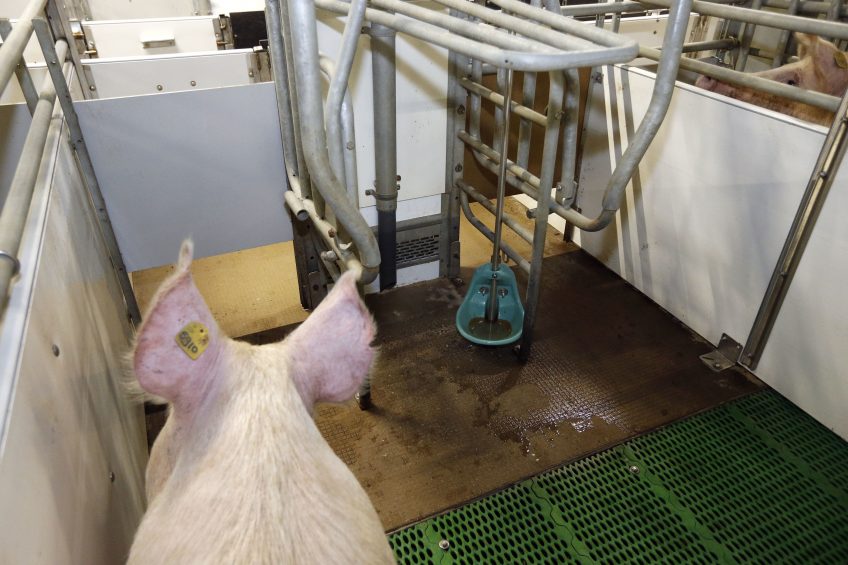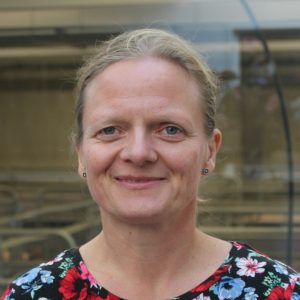Loose lactation for sows – fantastic and frustrating

Danish welfare and housing expert Vivi Aarestrup Moustsen was one of the driving forces behind the international conference ‘Loose Lactation Sows 2018’. Both the triple P (Pig, Pen and People) as well as the triple F (Future, Fantastic and Frustrating) were present, she writes.
In total, 38 experts and stakeholders met in Copenhagen to discuss the topic of loose lactating sows in this LLS18 conference. They came from the USA, Canada, Australia, Czech Republic, Germany, Austria, Switzerland, UK, the Netherlands, Sweden and Denmark.
In total, 12 universities and 3 very important international animal protection organisations (RSPCA, CIWF and WAP) were present. All shared the same goal – how can we successfully increase the number of loose lactating sows indoors.
Pig welfare cannot stand alone
When considering the overall perspectives of livestock production, welfare cannot and should not stand alone. We also need to take into account the environment – both locally (groundwater, etc.) and globally (e.g. carbon foot print) and then indoor production has important and significant advantages compared to outdoor production.
In 2018, the Danish Agriculture and Food Council’s pig producers have decided that loose housing of lactating sows is the future and the industry will focus on development of systems that are competitive in a global market and yet acceptable by society and consumers too.
Inviting experts and NGOs
A natural first step was to invite experts and non-governmental organisations (NGOs) in search for the same. Therefore the workshop included a presentation of the latest research results and discussion on what we know and where we need further research in order to make progress. The latter to be accomplished by attendants who are enthusiastic, committed to making a difference, and seeing opportunities and willingness to share.

Read more on swine production in Denmark
There was a common understanding of both the challenges the pig producers foresee before investing; the high prolific sows’ specific dietary requirements to be high milk yielding and the task of introducing caretakers successfully. And, that citizens influence our license to produce – however, it’s consumers’ willingness to pay that is important if a premium is too be expected.
No doubt that loose lactation is the future
There was no doubt that loose lactating is the future – and energy amongst the attendants to make it a successful future was fantastic – however, at the same time it’s frustrating that we do have knowledge gaps and that the systems which at first appeals to the pig producers and thereby they are likely to implement are not the same systems which appeal to consumers meaning that the chances of consumers paying a premium are low.
There was a general consensus that free farrowing is still far in the future for large scale commercial adoption and that temporary crating is/will be a necessary intermediate step.
Experience of both pigs and people
Another clear message was the importance of the experience of both animals and people in these systems. There is clearly a learning and adaptation process for both animals and staff before free farrowing or loose lactation systems can deliver best outcomes, and it is important to take this into account when evaluating the results of scientific experiments or commercial performance.
However, even though temporary confinement was seen as a halfway step towards reduced confinement in commercial practice, when the attendants were asked to design their future pen designs, there were no temporary confinement systems, but only free farrowing.
Why?
Because of the information we received on the attitudes of consumers and NGOs to confinement, which told us that any form of crating – in the long run – is unlikely/difficult to be accepted as part of a high welfare image.

Welfare expert Dr Monique Pairis-Garcia also attended this conference. Here is her take on loose lactation for sows
Sow welfare is only a part of the consideration
When decisions on purchase/ investment are made, by either consumers or farmers, sow welfare is only a part of their consideration. Other societal issues, including antibiotic use, environmental impact, product quality, production aesthetics all have to be considered.
We always need to adopt a whole-system view – encompassing ‘pens, pigs and people’. We can learn a lot from science, but should not neglect what we can also learn from experience.
And for the classical question – would we arrange a workshop like LLS18 again?
Yes, we most certainly will! It’s a gift/pleasure…
• to be surrounded and working with people who want to make a difference;
• to acknowledge the challenges pig producers face – long term investment, daily work and at the same time understand the importance of market demands;
• to try to meet and design qualified solutions; and
• not the least to focus and collaborate on future research initiatives.
An outcome applicable for pig producers
Where do we go from here? Of course, we stay in contact, exchange and discuss ideas, join in research proposals and projects and continue the collaboration. We also introduce the industry to the outcome from the workshop to make the outcome applicable and beneficial for pig producers.
There will be workshops/meetings with producers of pen design and companies building farrowing units to share and discuss future pen designs. And, we’ll discuss whether or how we can bridge the ‘gap’ between farmers making large investments seeking to improve the welfare of their pigs and make their facilities future proof – and the consumers’ perception and expectations of housing conditions. It’s all about pigs, pen and people!
Thanks to all who attended – and your attitude towards loose lactating sows!











